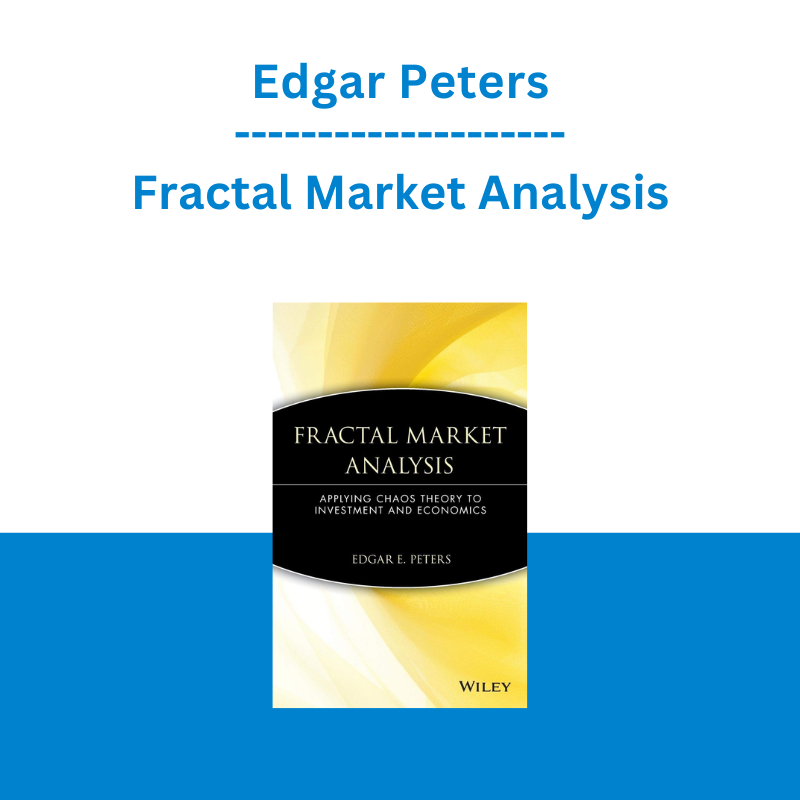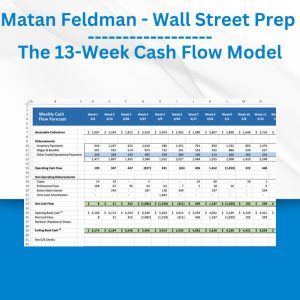*** Proof of Product ***
Exploring the Essential Features of “Edgar Peters – Fractal Market Analysis”
A leading pioneer in the field offers practical applications of this innovative science. Peters describes complex concepts in an easy-to-follow manner for the non-mathematician. He uses fractals, rescaled range analysis and nonlinear dynamical models to explain behavior and understand price movements. These are specific tools employed by chaos scientists to map and measure physical and now, economic phenomena.
Editorial Reviews
From Booklist
The average investor is usually unaware of the theoretical bases and academic underpinnings of various investment strategies. Investment books and popular reference guides barely mention efficient market or random walk theory, and the mathematical aspect of portfolio management theory appears as little more than a footnote. Little actually new has been added to the field of investment and market theory for the last 30 years, but recently Peters introduced the landmark Chaos and Order in the Capital Markets (1991). Chaos theory is a branch of mathematics that, despite its name, attempts to make order out of seemingly random events and that has found application in the natural sciences. Market chaologists, as they have come to be known, have marshaled an array of formulas and computer models but have been criticized for not being able to explain their ideas in practical terms or to demonstrate how to apply these ideas. Fractals are the main mathematical tool of chaos theory, and Peters now shows how these can be applied to financial markets and trading. This book is unquestionably complex and relatively expensive, but all libraries with investment collections should consider purchasing at least one copy. David Rouse
From the Publisher
A leading pioneer in the field offers practical applications of this innovative science. Peters describes complex concepts in an easy-to-follow manner for the non-mathematician. He uses fractals, rescaled range analysis and nonlinear dynamical models to explain behavior and understand price movements. These are specific tools employed by chaos scientists to map and measure physical and now, economic phenomena.
From the Back Cover
Business Week hailed it as the “bible of market chaologists”. Financial Analysts Journal ranked it “among the most provocative financial books of the past few years”. With the publication of Chaos and Order in the Capital Markets, Edgar E. Peters won universal acclaim for describing chaos theory for the stock, bond, and commodities markets of the 1990s. Now the most respected author on the subject of chaos theory gives traders and investors everywhere what they’ve been eagerly awaiting – the first applications-oriented book on using chaos as a sophisticated market analysis tool. In Fractal Market Analysis, Edgar Peters tackles head-on tradition bound capital market theories and asset pricing models that depend on symmetry and smoothness, base their results on regular, periodic market and economic cycles, and seek to explain away as “anomalies” such recurring events as market stampedes and crashes. In its place, the author proposes a new “fractal market hypothesis”, which opens a window into the way the financial world actually is, rather than the way we would like it to be. Based on current chaos theory and using fractals – objects whose disparate parts are self-similar and which thrive on market roughness and asymmetry – the book provides a valuable new framework for accurately understanding and precisely modeling the turbulence, discontinuity, and nonperiodicity that truly characterize today’s capital markets. Fractal Market Analysis delivers a robust tool for understanding the conflicting market randomness and determinism we experience every trading and investing day. Called “rescaled range (R/S) analysis”, it actually thrives on noise, measurement, and volatility, and is free of themathematical limitations of traditional Gaussian statistics. By following the guide’s numerous step-by-step case studies, you’ll learn how to apply R/S analysis to your own area of interest – bonds, equities, interest rates, foreign currencies, and gold – to more accurately determine the number and length of both nonperiodic and periodic market and economic cycles to enhance your portfolio selection. Here, finally, is the first professional guide to reconcile the rational, but limited approach of traditional quantitative management with the practical experience of actually dealing with the markets. By merging chaos theory, fractal statistics, and nonlinear dynamic modeling. Fractal Market Analysis leads you to ever-finer levels of market resolution. With it, you’ll better understand short- and long-term developments, undertake more precise time series and cycle modeling, and use your conclusions to create realistic market models.
About the Author
EDGAR E. PETERS is an expert on chaos theory and its financial applications. He is Chief Investment Strategist and Director of Systematic Asset Allocation for PanAgora Asset Management, Inc., a global investment management firm. He is a frequent lecturer on market theory, and has taught investment and portfolio management at Babson College, Boston College, and Bentley College. In addition to the first edition of Chaos and Order in the Capital Markets, he is the author of Fractal Market Analysis and numerous articles in professional journals.
Product details
Publisher : Wiley; 1st edition (January 12, 1994)
Language : English
About the author
Edgar Peters has been a market researcher, author and practitioner for over 40 years. He is the Founder of Fractal Market Cycles and Regimes at edgarepeters.com where he publishes capital market research and commentary. This work is an extension of his earlier research on fractals, chaos theory and behavioral finance. From 2008 – 2022 he was Managing Partner and Co-Director of Global Macro at First Quadrant, LLC in Pasadena, CA. Prior to joining First Quadrant he spent 23 years with PanAgora Asset Management where he was over time an equity portfolio manager, Director of Tactical Asset Allocation, CIO of Macro Investments, and CIO. Earlier in his career Ed was Investment Technology Manager at Interactive Data Corporation and an equity analyst/trader at Mutual Benefit Life. He has lectured extensively in the classroom as well as in conference settings. The author of numerous articles in investment journals, Ed is also the author of three books: Chaos and Order in the Capital Markets (Wiley, 1991, 1996), Fractal Market Analysis (Wiley, 1994), and Patterns in the Dark (Wiley, 1999). Ed holds an MBA from Rutgers University.
Please see the full list of alternative group-buy courses available here: https://lunacourse.com/shop/









